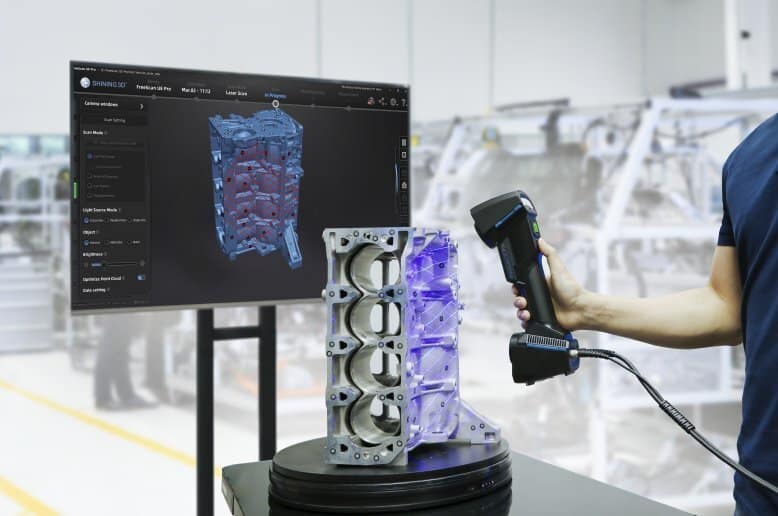With the rapid development of 3D scanning technology, the performance and accuracy of 3D scanners directly affect its application results. As an efficient driving device, the coreless motor has become an indispensable part of the 3D scanner due to its unique design and superior performance. This article will discuss the application solutions of coreless motors in 3D scanners, focusing on their advantages in improving scanning accuracy, speed and stability.
1. Working principle of 3D scanner
3D scanners capture the geometry and texture information of an object’s surface and convert it into a digital model. The scanning process usually involves shooting and data collection from multiple angles, which requires a precise motion control system to ensure stable movement of the scanning head. Coreless motors play a key role in this process.

2. Solution implementation
When integrating a coreless motor into a 3D scanner, there are several key factors to consider:
2.1 Motor selection
Choosing the right coreless motor is the first step to ensure the performance of your 3D scanner. Parameters such as motor speed, torque and power should be considered based on the specific needs of the scanner. For example, for scanning tasks that require high precision, choosing a motor with high rotation speed and high torque will help improve scanning efficiency and accuracy.
2.2 Control system design
An efficient control system is the key to achieving precise motion control. A closed-loop control system can be used to monitor the operating status of the motor in real time through feedback sensors to ensure that it operates in optimal working conditions. The control system should have the characteristics of fast response and high precision to adapt to the strict requirements for movement during the 3D scanning process.
2.3 Thermal management
Although coreless motors generate relatively little heat during operation, heat dissipation issues still need to be considered under high load or long-term operation. Designing heat dissipation channels or using heat dissipation materials can effectively improve the heat dissipation performance of the motor and ensure its stability and service life.
2.4 Testing and Optimization
During the development process of 3D scanners, adequate testing and optimization are essential. By continuously adjusting control parameters and optimizing the design, the performance of the overall system is improved. The testing phase should include performance evaluation under different working conditions to ensure that the motor can operate stably in various environments.
3. Application cases
In practical applications, many high-end 3D scanners have successfully integrated coreless motors. For example, in the field of industrial inspection, some 3D scanners use coreless motors to achieve fast, high-precision scanning, significantly improving production efficiency and product quality. In the medical field, the accuracy of 3D scanners is directly related to the design and manufacturing of medical devices. The application of coreless motors enables these devices to meet strict accuracy requirements.
4. Future Outlook
With the continuous advancement of 3D scanning technology, the application prospects of coreless motors in this field will be broader. In the future, with the advancement of material science and motor design technology, the performance of coreless motors will be further improved, and smaller and more efficient motors may appear, pushing 3D scanners to develop towards higher accuracy and efficiency.
in conclusion
The application solution of coreless motors in 3D scanners not only improves the performance and accuracy of the equipment, but also provides the possibility for its wide application in various industries. Through reasonable motor selection, control system design and heat dissipation management, 3D scanners can remain competitive in the rapidly developing market. With the continuous advancement of technology, the application of coreless motors will open up new directions for the future development of 3D scanning technology.
Writer : Sharon
Post time: Oct-25-2024

